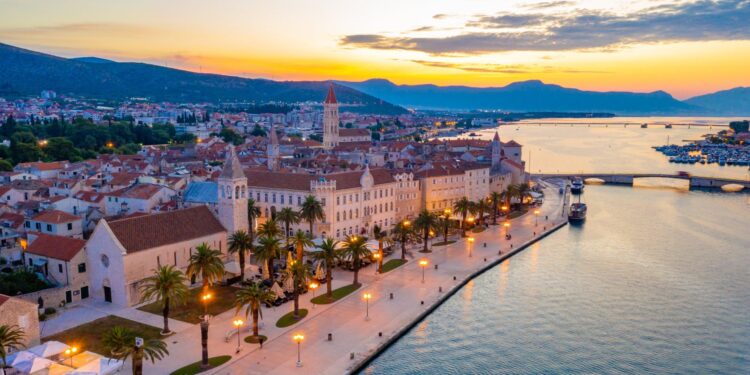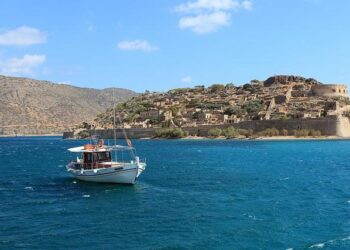Once renowned as a Mediterranean paradise offering travelers exceptional experiences on a modest budget, Croatia is undergoing a significant shift. Recent developments have propelled the country out of the realm of budget-friendly destinations, raising questions about affordability for tourists who once flocked to its Adriatic coast for sun, sea, and culture. This article explores the factors behind Croatia’s rising costs, examining the impact on visitors and the country’s evolving tourism landscape.
Rising Costs and Tourism Boom Challenge Croatia’s Affordability
The surge in tourism has significantly driven up prices across Croatia’s most popular destinations. Local businesses, from accommodation providers to restaurants, are cashing in on the influx of visitors, leading to higher costs that strain the budgets of traditional travelers. Small towns along the Adriatic coast, once famed for affordable stays and authentic experiences, now face a market dominated by luxury rentals and booming hospitality chains. This shift has reshaped the travel landscape, making it increasingly difficult for budget-conscious tourists to enjoy the region without compromising on comfort or experience.
Several factors contribute to this affordability crunch, including:
- Rising demand for short-term rentals: Increased competition has pushed nightly rates beyond the reach of budget travelers.
- Inflation and seasonal price hikes: Basic goods and services see sharp escalations during peak months, affecting everyday expenses such as dining and transportation.
- Infrastructure upgrades: While necessary, investments in tourism infrastructure also drive up operational costs passed on to consumers.
| Category | 2019 Avg. Cost | 2023 Avg. Cost | Increase (%) |
|---|---|---|---|
| Accommodation (per night) | €50 | €85 | 70% |
| Meal at Mid-range Restaurant | €15 | €25 | 66% |
| Public Transport (daily pass) | €4 | €6.5 | 62.5% |
Impact on Local Businesses and Travelers’ Experience
Local entrepreneurs in Croatia have felt both the benefits and setbacks stemming from the recent surge in travel costs. While increased prices have attracted a more affluent clientele, many small businesses dependent on budget travelers report a noticeable dip in foot traffic. Traditional markets, family-run restaurants, and boutique accommodations that once thrived on volume now face stiff competition from luxury resorts and upscale dining options targeting wealthier visitors. This shift has sparked concerns about the loss of authentic, local experiences that once defined Croatia’s charm.
For travelers, the rising expenses have translated into a more cautious approach to visiting the country. Many budget-conscious tourists are opting for shorter stays or seeking alternatives beyond Croatia’s popular hotspots. Those who continue to visit often adapt by prioritizing fewer activities, which impacts the overall visitor economy. Below is a snapshot of how traveler behavior is evolving in response to the changing cost landscape:
| Traveler Type | Change in Visit Duration | Activity Shift |
|---|---|---|
| Budget Travelers | Shorter stays (2-3 days) | More free/self-guided activities |
| Mid-range Tourists | Moderate stays (4-6 days) | Selective dining, fewer excursions |
| Luxury Visitors | Longer stays (7+ days) | High-end experiences, exclusive tours |
Strategies for Budget Travelers Navigating Croatia’s New Pricing Landscape
Budget travelers venturing into Croatia must recalibrate their spending strategies amid rising costs that now define the travel experience. Prioritizing off-season travel offers a significant advantage, as prices for accommodation and attractions noticeably drop outside peak months. Additionally, exploring lesser-known towns beyond the Adriatic coast not only unveils authentic Croatian culture but also introduces more affordable lodging and dining options. Utilizing local markets for meals instead of tourist hotspots can further stretch a travel budget without compromising on quality or experience.
Smart transportation choices are critical in navigating the evolving pricing landscape. Opting for public buses over taxis or rental cars can reduce daily expenses substantially. Moreover, digital travel passes and multi-day tickets for ferries and buses offer convenience and cost savings. Below is a quick comparison of typical transportation costs in 2023 versus 2024 across popular Croatian routes, highlighting where budget travelers can optimize their outlay:
| Route | 2023 Price (€) | 2024 Price (€) | Suggested Budget Option |
|---|---|---|---|
| Split to Hvar | 15 | 20 | Early ferry bookings |
| Zagreb to Dubrovnik | 35 (bus) | 40 (bus) | Night buses |
| Dubrovnik Airport to City | 25 (taxi) | 30 (taxi) | Airport shuttle buses |
- Book accommodations at least 3 months in advance.
- Use Croatia’s extensive network of bus routes instead of taxis.
- Take advantage of free walking tours to explore cities economically.
- Visit local bakeries and markets for affordable meals.
Insights and Conclusions
As Croatia continues to evolve as a sought-after travel destination, rising costs reflect its growing popularity and improved infrastructure. While once celebrated for its affordability, the country’s transformation means that budget travelers may need to reconsider their plans or adjust expectations. For those seeking an authentic experience, awareness of these economic shifts is essential in navigating Croatia’s changing tourism landscape.
















